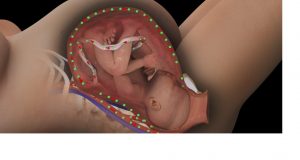A 2019 study of Chinese cerebral palsy medical malpractice cases found that over 60 percent of them involved birth asphyxia and hypoxic-ischemic encephalopathy. These results quantity CP-associated medical errors and conditions. Narrowing them down helps healthcare providers better understand the necessary steps to prevent it.
What does this tell us about cerebral palsy malpractice cases in the United States? Good question. Well, not much for the compensation awarded for a cerebral palsy case. But the nature of the claims does provide a lens into malpractice cases here, perhaps with less fluff because so many papers on cerebral palsy malpractice cases are really just arguments against the civil justice system we have had in this country since before we were a country.
 Maryland Medical Malpractice Attorney Blog
Maryland Medical Malpractice Attorney Blog


 Under New York’s
Under New York’s  Conducted by British, American, and Irish researchers, they used data from the United Kingdom’s Clinic Practice Research Datalink primary care database. Their data spans the years 1987 to 2015. The researchers examined 1,705 adults, ages 18 to 99, with
Conducted by British, American, and Irish researchers, they used data from the United Kingdom’s Clinic Practice Research Datalink primary care database. Their data spans the years 1987 to 2015. The researchers examined 1,705 adults, ages 18 to 99, with  Near-infrared spectroscopy (NIRS) is a spectroscopic method that uses the near-infrared region of the electromagnetic spectrum. There are many different applications of NIRS which include astronomical spectroscopy, agricultural, pharmaceutical, and neonatal research.
Near-infrared spectroscopy (NIRS) is a spectroscopic method that uses the near-infrared region of the electromagnetic spectrum. There are many different applications of NIRS which include astronomical spectroscopy, agricultural, pharmaceutical, and neonatal research. Ischemia is divided into two categories: focal (specific to one portion of the brain) and global (impacting a large general area of the brain). While focal ischemia is often caused by a
Ischemia is divided into two categories: focal (specific to one portion of the brain) and global (impacting a large general area of the brain). While focal ischemia is often caused by a